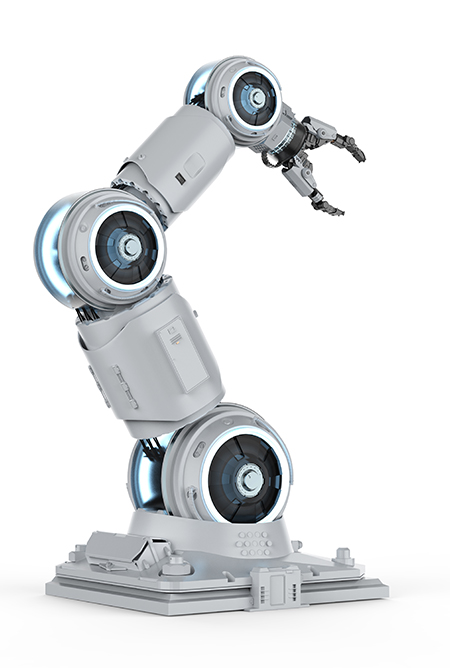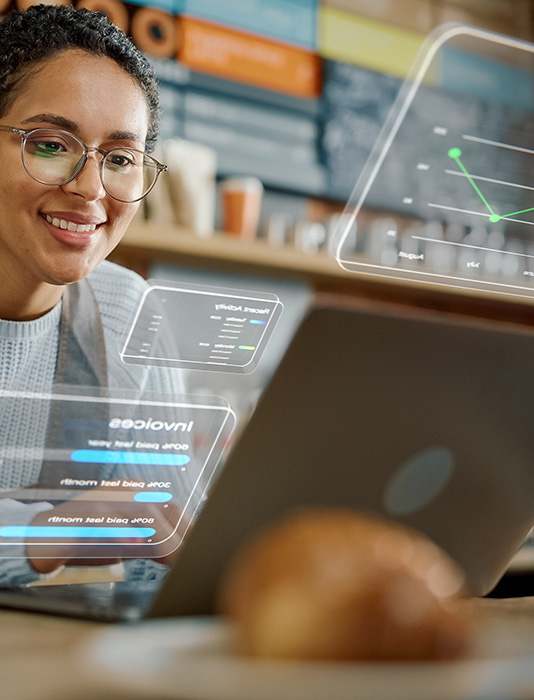How Conversational AI Improves Restaurant Customer Service


The release of ChatGPT exploded interest in AI across many sectors, and restaurants are no exception. But AI development for restaurants has been in progress for many years. From voice ordering to inventory and purchasing to self-serve kiosks, many AI applications that have been on the drawing board are rapidly moving into production environments.
AI offers an opportunity to bring efficiency while reducing costs to both locally-owned restaurants and large enterprise chains.
We’ll take a look at some of the key artificial intelligence use cases for restaurants that are gaining market traction, including:
One of the best examples of how most customers are already using AI technology in the restaurant industry is through voice search applications on their smart devices and in their vehicles.
Though virtual assistants like Siri have been growing in popularity for these types of tasks, many are also turning to AI technology that is being built into vehicle navigation systems as well.
AI technologies in our cars can now help consumers find retail stores, recreational facilities, and favorite restaurants, hands free.

Consumers not only can search for a favorite restaurant en route, they can actually place an order before they even get to the parking lot.
The demand for the ordering process and the food preparation to be completed before a customer even arrives at the restaurant has grown tremendously in the last few years.
Companies like DoorDash and Uber Eats have made it easier than ever for a customer to order a meal from their mobile device and have it arrive at their door quickly and accurately.
But third-party services such as these can eat into a restaurant owner’s profits.
As Jonathan Maze notes in his article in Restaurant Business, though third-party services may be beneficial to restaurants to some degree, the fees make it harder for many restaurants to generate a profit.
“And profit after all,” he writes, “is why businesses do business.”
But the restaurants can take back some control of their customer traffic and ultimately their restaurant sales by making it easier for their customers to order directly with them through voice ordering systems and food-delivery apps that are customized to their specific restaurant.

While much research has been ongoing in labs to bring AI technologies and automation to restaurant kitchens, more and more are starting to be productized.
One example is the Pizzaiola autonomous chef, an A.I.-driven, voice-controlled pizza maker that’s making its way to the Chicago-based regional pizza chain, Slice Factory, as noted in a recent Forbes article. The robotic chef monitors more than 1,200 parameters every microsecond, from managing food quality to the point-of-sales machine.
When a customer places a pizza order, Pizzaiola will select, press, and stretch the dough; add the sauce, cheese, and toppings; then cook, slice, and box the pizza all to the customer’s specific preferences. It’s fulfilled in real-time and can even have an individual jumbo slice ready to go through the Slice Factory drive-thru in minutes.
While not all AI technologies are as fully productized as Pizzaiola, here are some of the other ones in various stages of development:
Cooking: Similar to Pizzaiola, AI-enabled kitchen appliances such as ovens, fryers, and grills can be programmed to cook food to precise temperatures and times, ensuring consistent results and reducing the risk of under or over-cooking. This can improve the overall quality of the food and reduce waste.
Dishwashing: AI-enabled dishwashing machines can use machine learning to automatically adjust the water temperature, detergent, and wash time based on the type of dishes being cleaned.
Food preparation: AI-powered kitchen robots can automate tasks such as chopping vegetables, kneading dough, and making sauces, helping improve efficiency and reducing labor costs.
Inventory management: AI can also be used to optimize inventory management in the kitchen. By analyzing data on ingredient usage and waste, restaurants can reduce food waste and improve inventory management.
Safety: Kitchen automation can also improve safety by reducing the risk of human error. For example, automated systems can monitor cooking temperatures and alert staff if food is at risk of being under or over-cooked, reducing the risk of food-borne illness.
Another exciting area is self-service kiosks within the restaurant itself.
For some customers, having the in-restaurant dining experience is still an important part of their overall customer experience.
That said, standing in long lines, or waiting for staff to take their order – especially when staff is limited – can make otherwise loyal customers have second thoughts about where they want to dine.
Customer behavior is often driven by their expectations.
With a voice-enabled self-service kiosk, customers can place orders without the need for a restaurant staff member. Voice AI not only allows the customer to order, but it also makes it easy for the customer to change and delete items as they wish.
There is even artificial intelligence technology that will eventually allow a restaurant’s kiosk to use facial recognition software to personally greet regular customers and allow the customer to say “I’ll have my usual.”
The need to have restaurant operators answer phones can cut significantly into a restaurant’s bottom line.
Worse, not having enough staff to answer calls – while also perhaps missing important ones – can also impact not just profits, but customer satisfaction as well.
One company that faced this challenge was AmeriBrunch Cafe in Las Vegas:
“When we were busy at the restaurant, we had a one hour wait at some point. It was just impossible to answer the phone. Nobody was even hearing the phone at that point.” – Nicolay Poptchev, Co-Owner of AmeriBrunch Cafe, Las Vegas
Now, every call is answered by a voice assistant that’s like a full-time employee 24 x7. And staff can focus on what they do best: providing exceptional service to customers in the restaurant.
The co-owner of AmeriBrunch describes in this video how they were able to use phone voice ordering to reduce chaos in the restaurant.
The pandemic changed how we engage with restaurants, and drive-thru lanes emerged as the most popular option.
According to the field experts at Restaurant Dive, during the height of the pandemic in 2020, drive-thru visits increased by 26% in the second quarter and accounted for 42% of all restaurant visits in total during that period.
As with a restaurant’s phone ordering system, having enough staff to manage the drive-thru window while also focusing on other necessary tasks can be a considerable challenge.
Similar to virtual assistants, an AI voice ordering system allows customers to place their food and drink orders using voice recognition software that is designed specifically for that restaurant’s drive-thru lane.
Voice-enabled drive-thrus also contribute to an improved customer experience because they offer greater accuracy, an issue that has increased since the pandemic.
A voice AI-powered phone ordering system is a hassle-free, easy-to-implement solution that relieves much of the pressure restaurateurs are facing to provide frictionless service.
Restaurants have always run on thin margins, but they’ve gotten even thinner in the last few years.
Some restaurants are introducing AI technology into their accounting and tracking software to streamline inventory and purchasing decisions and look for current trends.
A January, 2023 article in The Atlantic noted that a company called ClearCOGS is using artificial intelligence to “help restaurants streamline their operations, reduce their costs, and increase their profits,” notes co-founder, Matt Wampler.
ClearCOGS takes restaurants’ customer-order history, supply data, and labor data and uses AI-powered modeling to make their books leaner and more profitable. If people are starting to order more spaghetti than burgers, the system will prompt the chef or manager to buy more pasta and fewer rolls.
With ClearCOGS, restaurants can get answers to questions like whether a bakery should bake additional loaves of bread.
“The question they needed answered was, there’s an assistant manager on the night shift and a couple hours before close, he has to decide whether to bake another tray of bread or not. We provide that answer,” adds Wampler.

Integrating artificial intelligence into the restaurant business is an exciting endeavor. If you’d like more information on what AI technology can do for your restaurant, reach out to the experts at SoundHound today.
We can show you how our customizable AI solutions can help you to deliver fast, reliable, and more convenient dining experiences while increasing operational efficiencies and reducing staff dependencies.
Ready to learn more? Talk to us about how we can help bring your restaurant’s AI technology to life.
At SoundHound, we have all the tools and expertise needed to create custom voice assistants and a consistent brand voice.